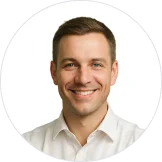Workforce of the Future

Workforce planning is at an inflection point. Traditional approaches—anchored to fixed job descriptions and rigid career ladders—no longer match the pace of change in today’s economy. The organizations that willthrive are those that embrace a function-agnostic view of work, focusing on skills, capabilities, and success profiles rather than static roles.
The Limits of Traditional Planning
Conventional workforce planning assumes stability: a clear pipeline of jobs, a steady demand for known skills, and linear progression from one role to the next. But the reality is different. Digital disruption, AI, and global shifts are reshaping industries faster than job frameworks can adapt. This leaves organizations with gaps in critical skills, even as some roles become obsolete overnight.
From Jobs to Capabilities
The winners will be those who look beyond job titles to the underlying capabilities that drive success. Instead of asking “What role do we need to fill?”, forward-thinking leaders ask:
- What skills will create value in the next three to five years?
- Which combinations of technical and human capabilities define success across different contexts?
- How can we build adaptive success profiles that transcend functions?
This approach not only broadens the talent pool but also unlocks internal mobility, allowing employees to grow across disciplines.
Building Success Profiles
Success profiles capture the competencies, experiences, and traits that predict high performance—regardless of job title. For example, resilience, problem-solving, and digital fluency may matter as much in marketing as in operations. By defining these profiles, organizations can map talent more effectively and prepare for future needs with precision.
Platforms like Fitt make this practical—integrating competency assessments with analytics to help leaders see beyond roles into the true drivers of performance.
A New Model for Workforce Planning
Adopting a function-agnostic view requires:
- Skills intelligence: Clear visibility of current and emerging skills across the workforce.
- Dynamic planning: Models that update with shifts in strategy, technology, and markets.
- Employee agency: Empowering individuals to build skills and pursue pathways aligned with future needs.
- Integrated assessments: Data that ties potential to capability, notjust experience.
Final Takeaway
The workforce of the future won’t be built around rigid roles. It will be shaped by success profiles that cut across functions and industries. Leaders who adopt this view will build more agile, future-ready organizations. Those who don’t risk being locked into yesterday’s definitions of work.
The next era of workforce planning belongs to those who plan for adaptability, not just jobs.


